Several years ago, I became more aware of the importance of trauma kits, particularly with regards to hemorrhage control considering I am an avid recreational and (semi-)competitive shooter.
I try to keep a trauma kit on me whether it is my range bag or kit, or in my everyday carry bag.
With my Jeep Wrangler becoming my primary range vehicle, I figured that I should put a dedicated medical / first aid kit in the Jeep. But the way I set it up, I actually have two (2) kits.
I have one kit in the rear of the Jeep in the cargo area attached to the driver’s side Springtail Solutions Side Rack. The Springtail Solutions Side Rack is MOLLE compatible and will accept MOLLE accessories.
Read more on the Springtail Solutions Side Rack install in my “The First 100 Days” ownership article on my Jeep.
I ended up using the Orca Tactical MOLLE Rip-Away EMT Medical First Aid Pouch because it is designed with a loop fastener panel that attaches to the PALS section with MOLLE straps. The pouch itself with hook fastener on the back-side attaches to the mounted panel.
The pouch is then secured with an additional retention strap. But then the pouch can be quickly taken off the mount point for quick deployment (no need to weave the MOLLE straps off).
Anyway, the kit I have in the rear of the vehicle is multi-purpose with supplies to address basic first aid (small cuts to medium cuts, sprains, etc.) to more serious hemorrhagic trauma (heavy bleeds).
This kit has an assortment of adhesive bandages, small to large gauze pads, alcohol wipes, burn and antibiotic ointment packets, wrap bandage, medical tape, and pain relievers for minor issues.
For the critical bleeds, it has a large Z-fold gauze, pressure bandage (OLAES or Israeli), chest seals, and a tourniquet along with nitrile gloves and medical shears.
Obviously, a kit is only as good as it accessibility. Having it in the rear of the vehicle is not expedient for when in the passenger compartment, which can be problematic in a rollover or other scenario where the driver is trapped in the seat.
Thus, I have a second trauma specific kit placed behind the headrest of the driver’s seat.
The headrests of the two front seats have Blue Ridge Overland Gear headrest panels. These are basically just panels with loop fastener fabric on the rear facing side so that you can attach pouches or other accessories with hook fastener.
I used a Blue Ridge Overland Gear IFAK pouch for this kit.
In the kit I have primarily trauma specific gear for hemorrhagic control. This includes heavy gauze, a wrap bandage, pressure bandage (OLAES), chest seals, Z-fold gauze, and a tourniquet along with nitrile gloves and medical shears.
I really like the placement of a trauma kit behind the headrest and I highly recommend a trauma kit that is easily accessible from the driver’s seat. The placement behind the driver’s seat headrest is also good because it is accessible to the passengers.
If you are looking for a pouch with tear-away capabilities, I highly recommend the Orca Tactical MOLLE Rip-Away EMT Medical First Aid Pouch because it is not only good, but it is quite affordable (under $25, without the supplies of course).
On the other hand, I can only give a light recommendation on the the Blue Ridge Overland Gear IFAK (Individual First Aid Kit) pouch. It is actually a little pricey ($50) and the design is not any better than other IFAK pouches, aside from the fact that is backed with hook fastener. But it does function fine as an IFAK pouch and holds the enough supplies to handle hemorrhagic trauma.
Anyway, that summarizes the medical kits in my Jeep. I highly recommend everyone a first aid kit in their primary vehicle and especially in any vehicle that is used for outdoor recreation. You never know what medical needs may arise, however minor, while out and about.

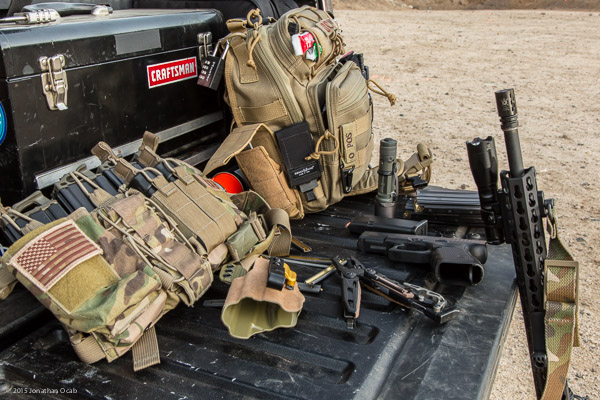

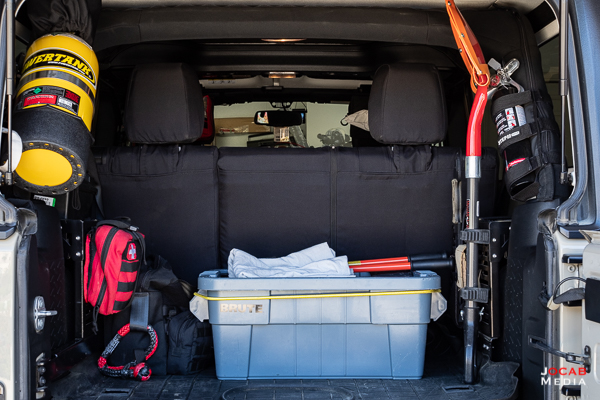
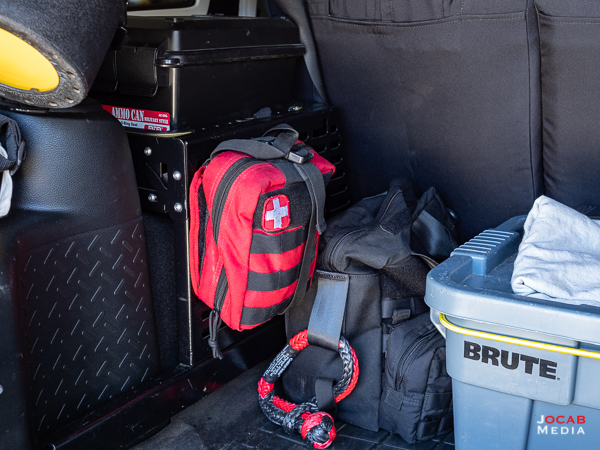
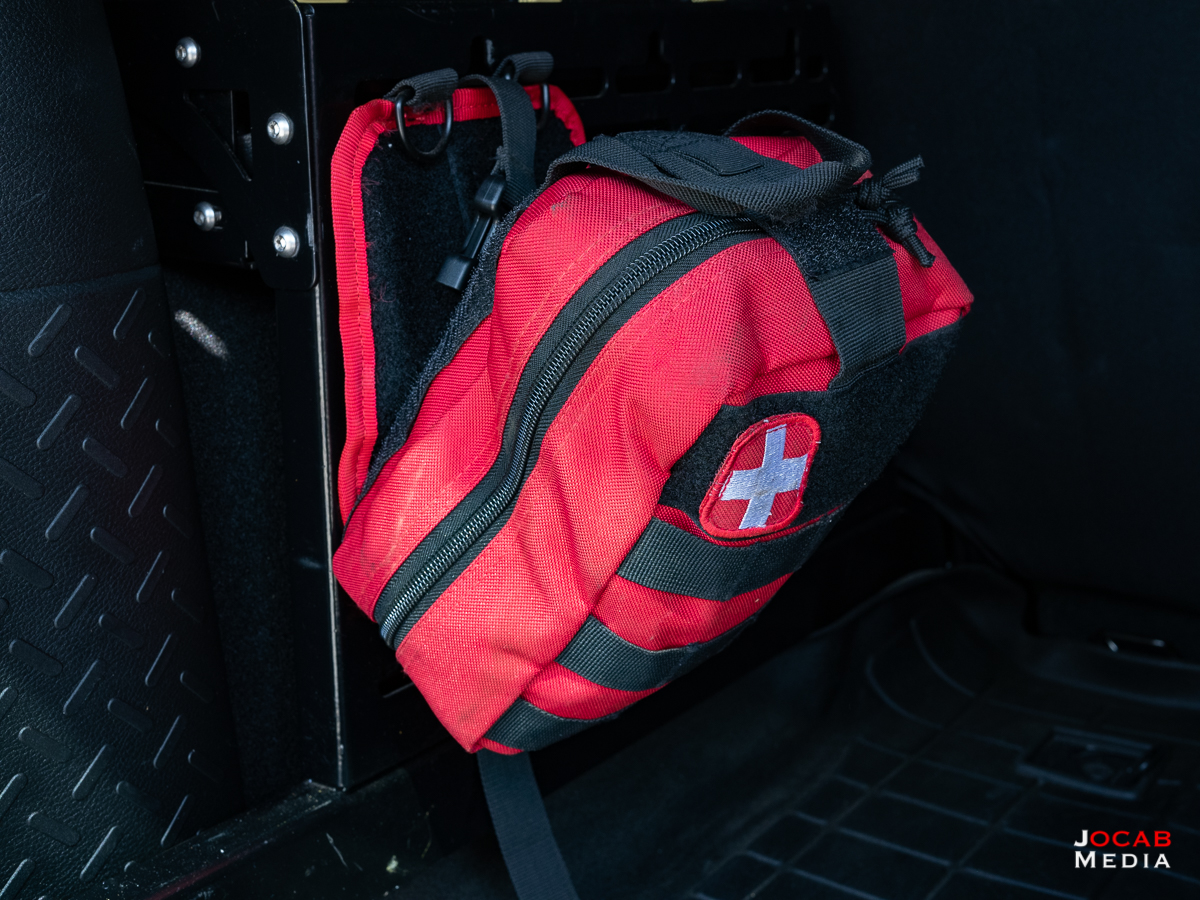
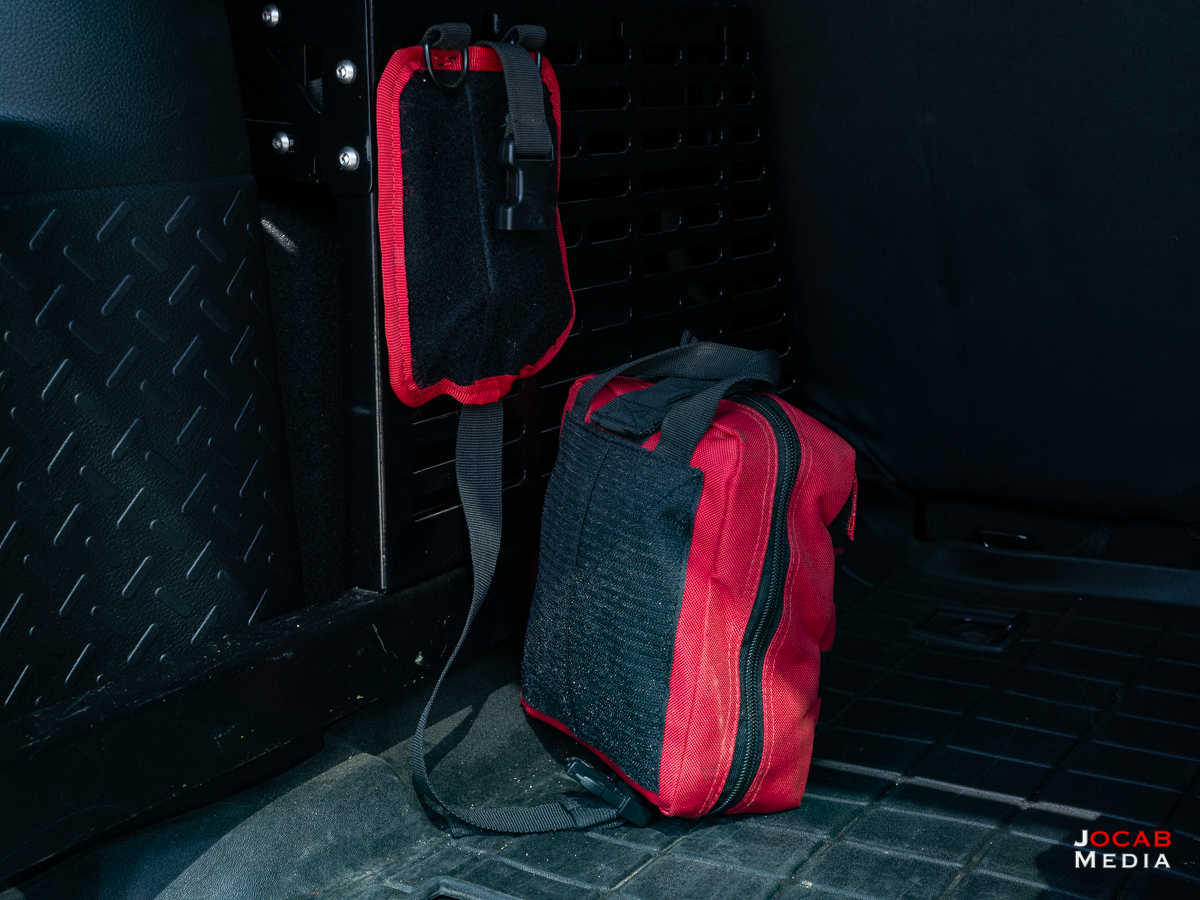
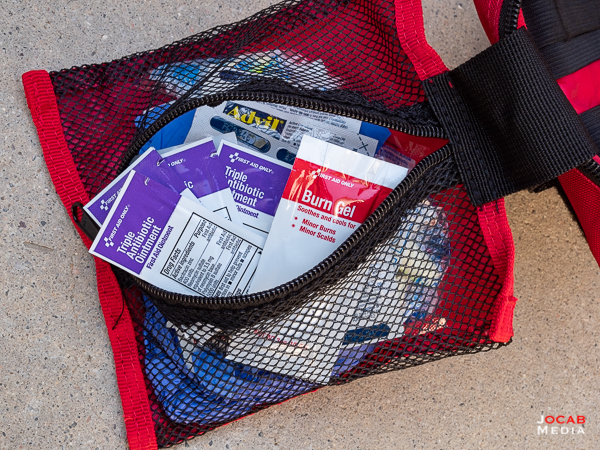
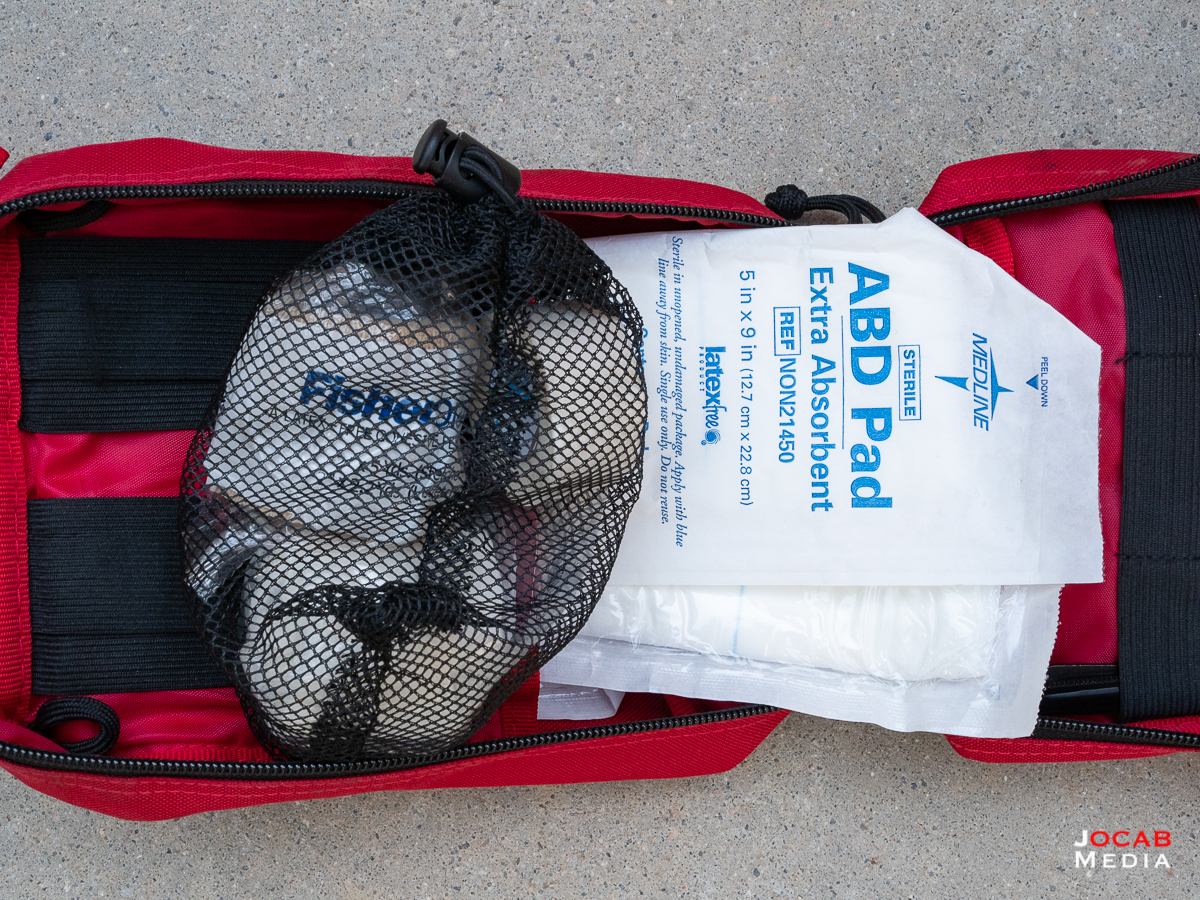
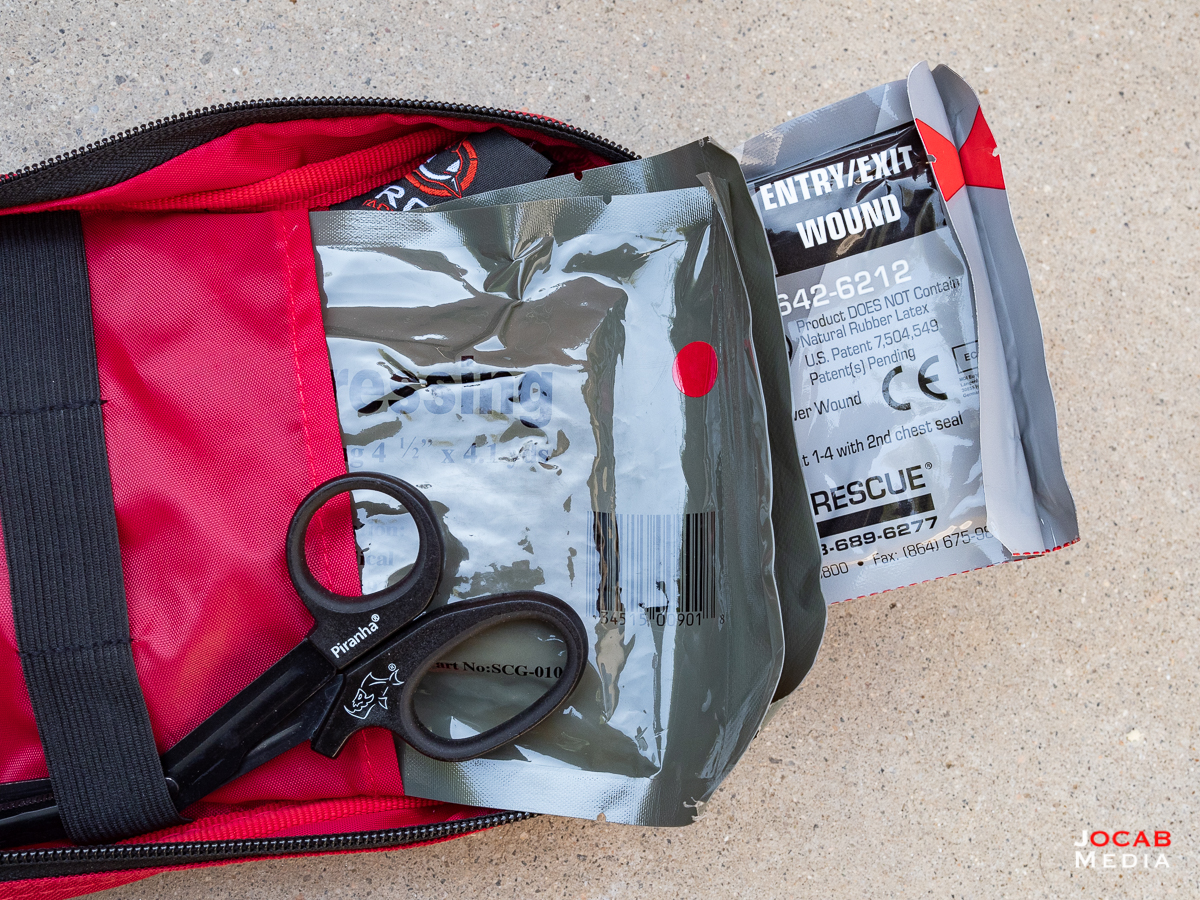
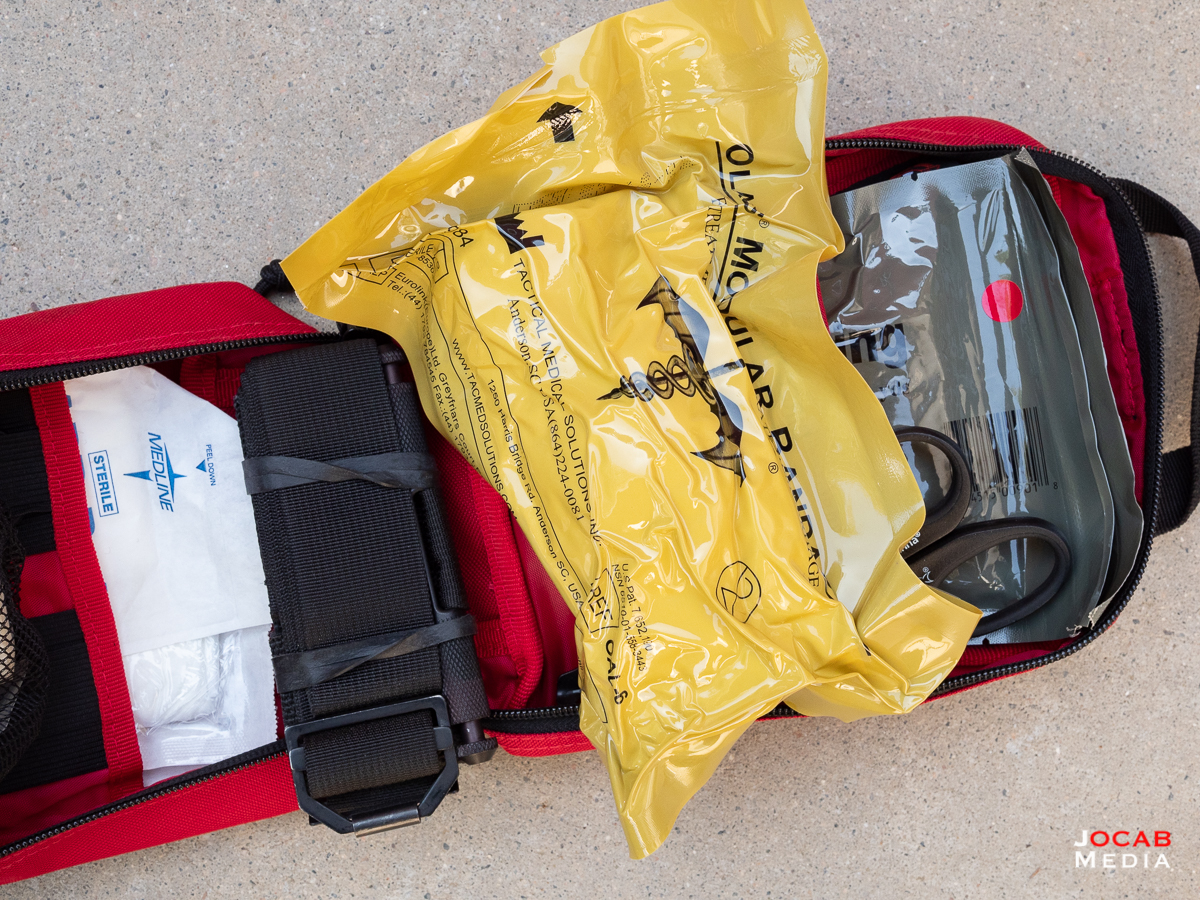
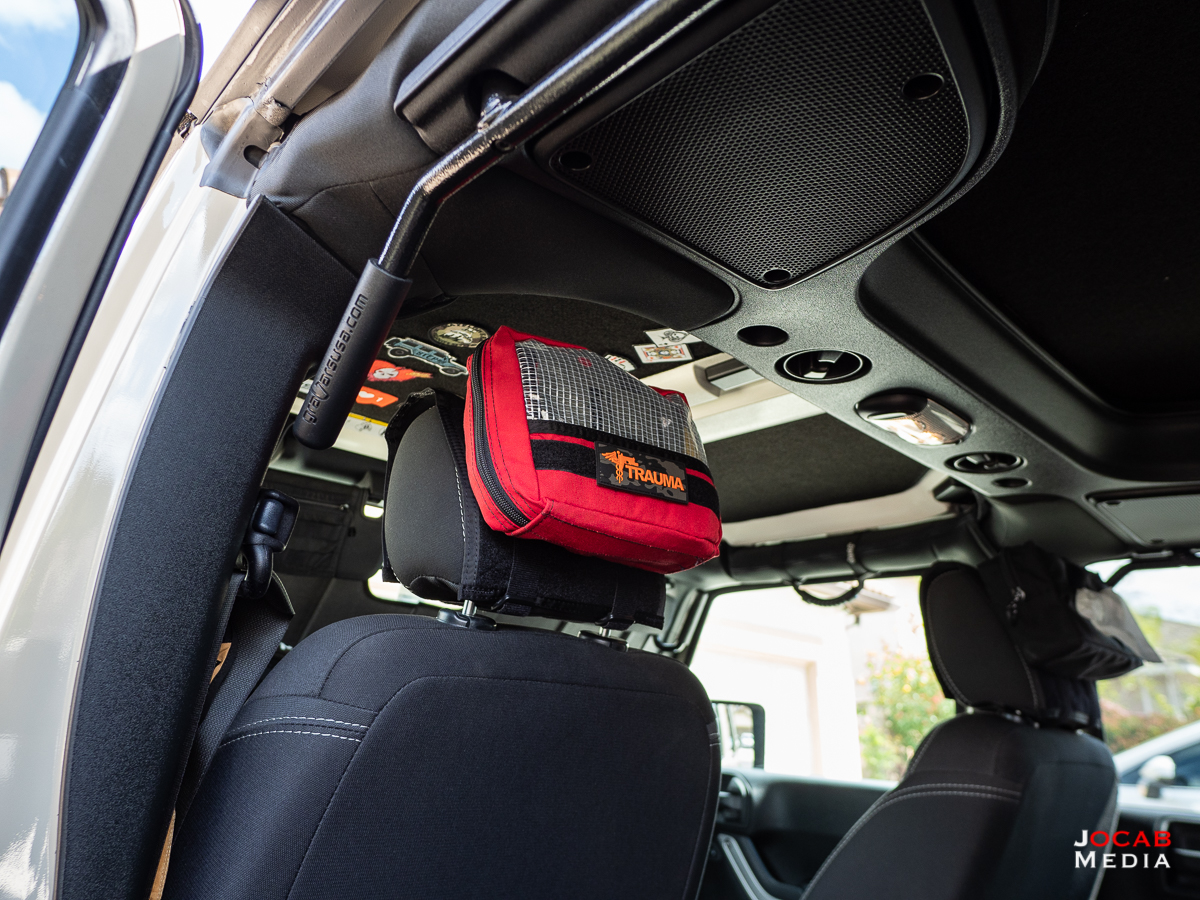
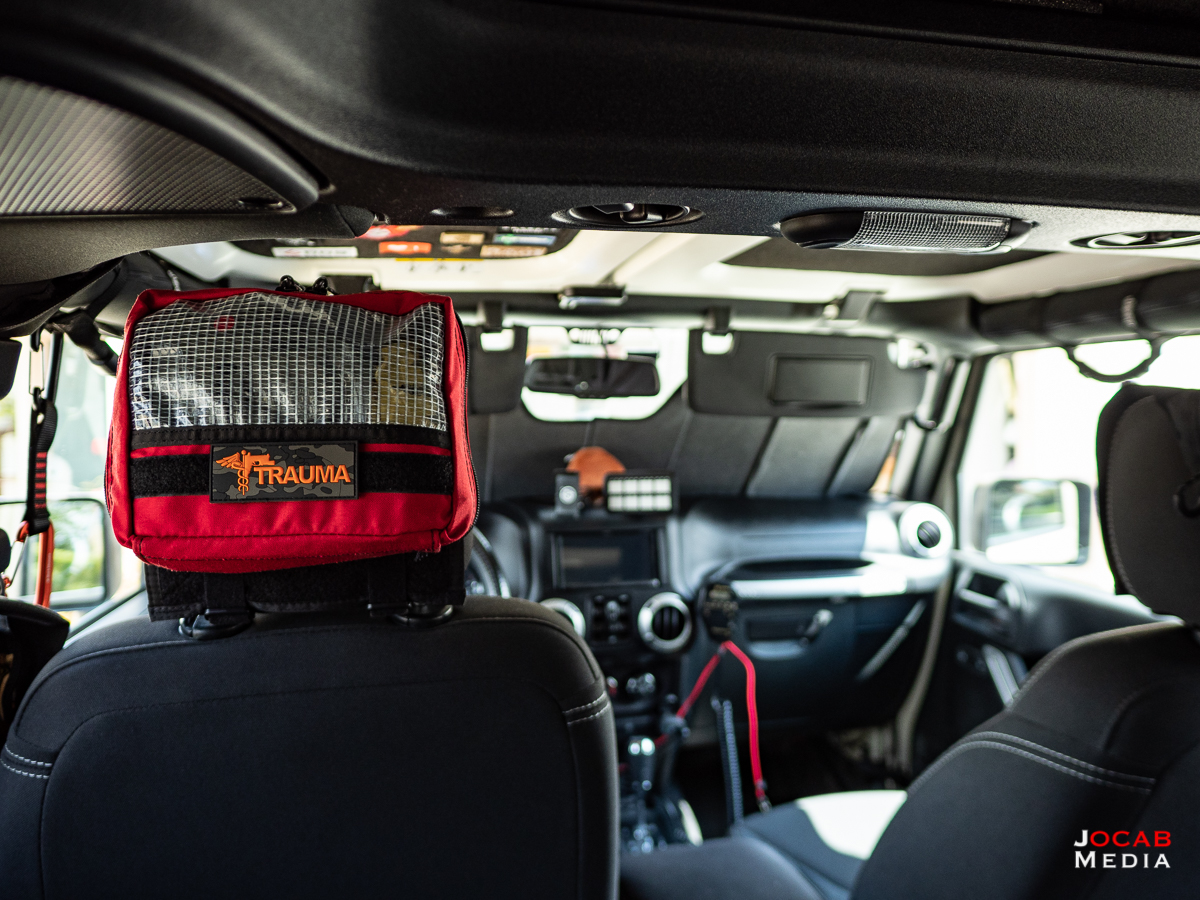
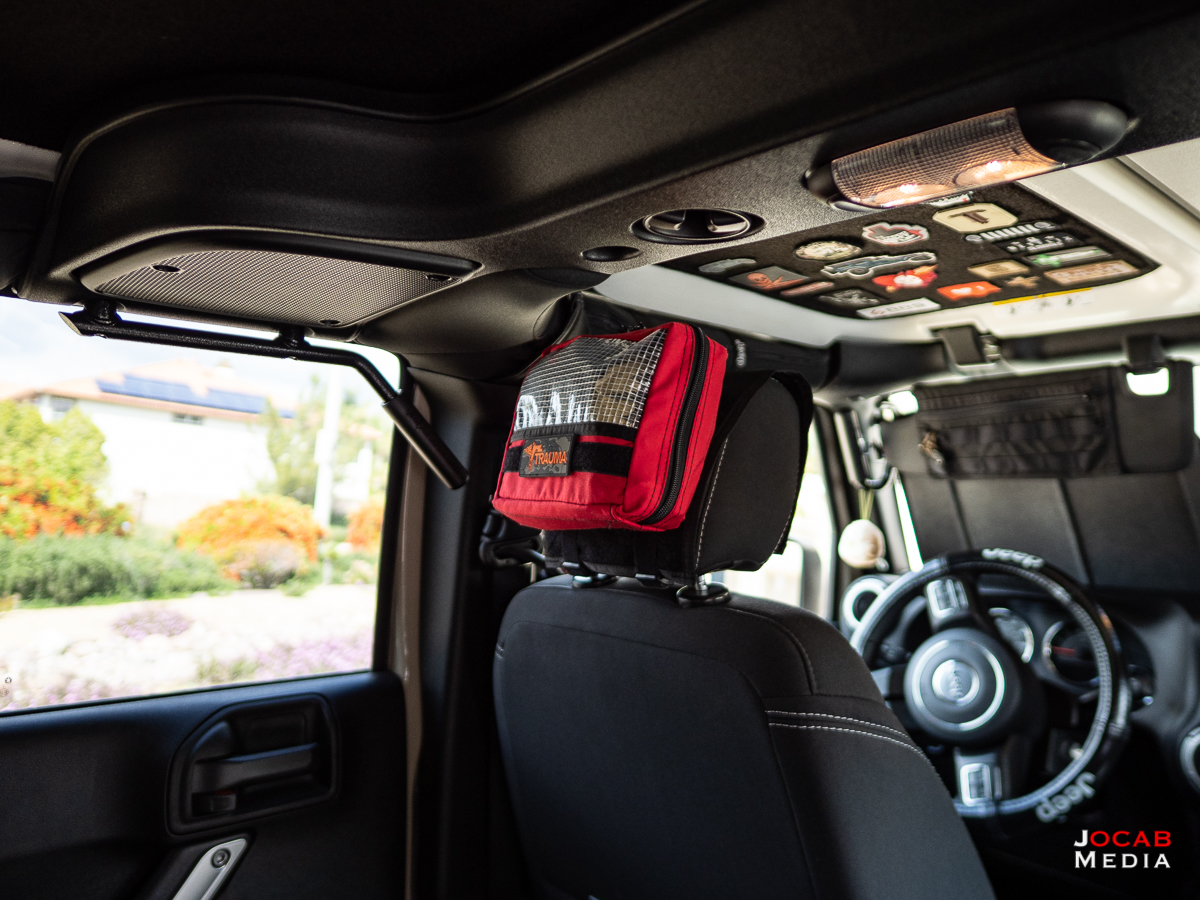
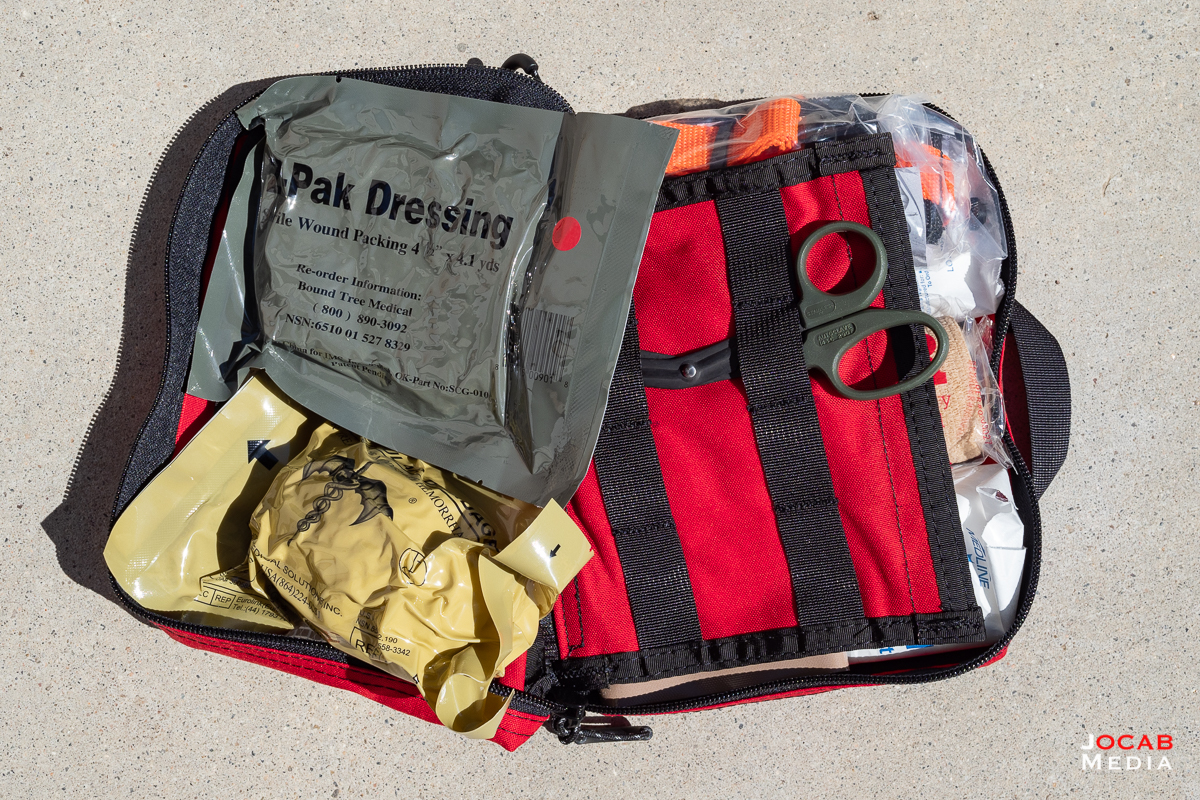
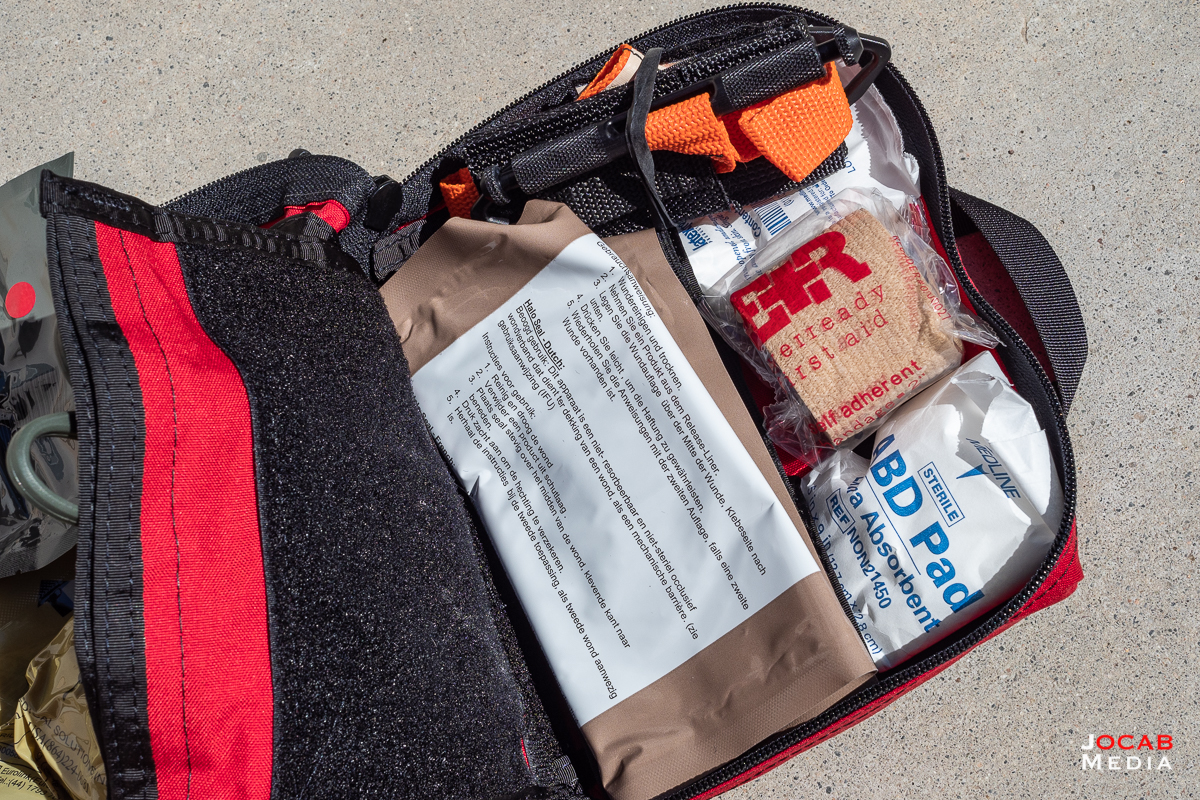
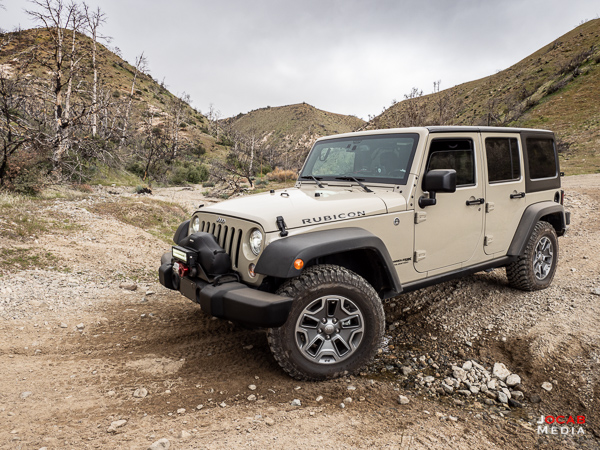
Vehicle Everyday Carry – Tire Repair – ocabj.net
[…] I mentioned in a prior article on my Jeep medical kits, the Orca Tactical rip-away pouch secures to MOLLE but can tear away quickly (and be remounted […]